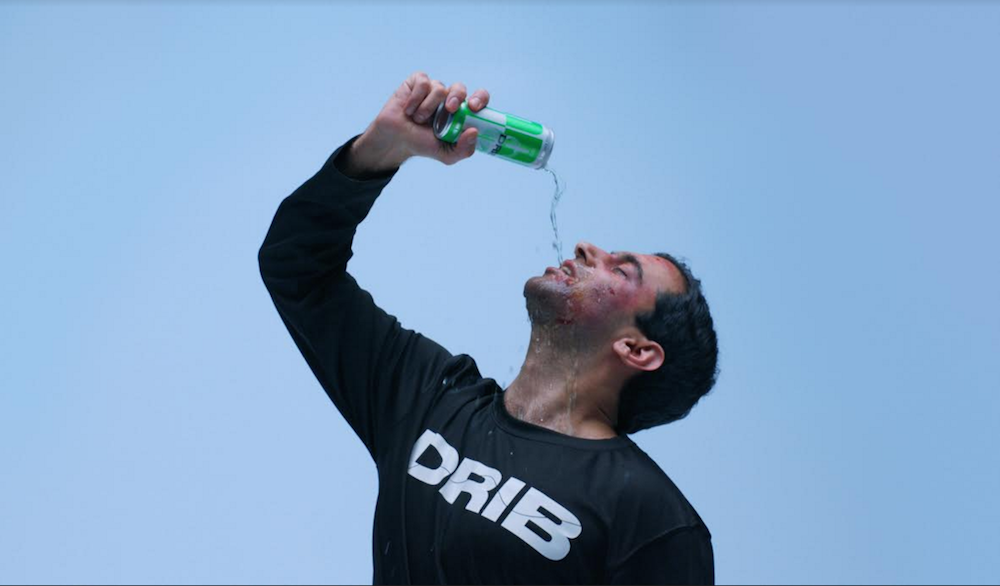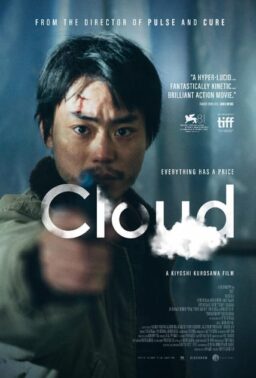You can always count on seeing something different at SXSW, which is about as experimental as a mainstream festival can be. That’s especially the case with the documentaries that the festival selects, which you can count on offering a unique story, or at least unique visual storytelling. Such is the case with the first three docs I’ve seen seen from SXSW line-up, which includes a fiction/hybrid (“DRIB”), a one-man-crew production (“Ramblin’ Freak”) and a documentary (“The Work”) that takes place over the course of four days, in one massive room inside Folsom State Prison.
In keeping with the alternative nature of Austin, TX, which tells its small businesses to “Keep Austin Weird,” the films within Austin’s SXSW festival often push the normal. The promotions during the festival do too, like when “homeless hotspots” were an actualized idea in 2012, turning homeless people into Wi-Fi centers. Director Kristoffer Borgli’s energy drink advertising expose “DRIB” would then be a strong fit for SXSW, as a doc that wants to be packaged as not your ordinary documentary narrative, with not your ordinary subject. But as it becomes so busy without anything interesting to say, this extreme operation only unwittingly embodies the vacuousness of energy drink marketing.
“DRIB” starts off as a documentary, about an intriguing prank artist named Amir Asgharnejad, who has become viral famous for his provocative street fight videos, which we learn to be staged. He’s being interviewed by “DRIB” director Kristoffer Borgli, telling a story from the beginning about how Amir became involved with some unnamed major energy drink ad campaign back in 2014. But wait, then “DRIB” becomes “a reenactment of recent events,” with Amir playing himself as he shares the five days in which he fell into the prowess of a figure named Brady, a zealous ad man who fashions himself an artist from the outside (played by Brett Gelman in his more serial killer phases). Brady wants to use Amir’s abilities for viral fights to create an edgy campaign for DRIB, which will also become some sort of artistic statement despite its primary audience of teenage boys.
But wait, then the documentary that became a reenactment becomes a documentary again, with footage of outtakes during messed-up serious beats. There are even a few moments in which the production of “DRIB” addresses how difficult Amir can be as an actor, which seem like a pretty obvious possibility from the start. And even if this meta part is indeed fake, it’s another vain statement of rebellion that’s met with a shrug. “Drib” is three different movies for the price of one, none of its compartments able to articulate beyond the tired irony or snideness found in half the internet’s comment sections.
There’s plenty to be said about the way that real-life companies create this macho cesspool of sugar and tacky testosterone, but “DRIB” lacks basic wit. Instead of selling why Amir deserves the numerous references to Andy Kaufman, the story would rather focus on its snide foray into what is, gasp, a soulless enterprise driven by money and a lack of integrity. Unfunny and rarely surprising, Amir comes off as nothing more than a troll throughout the whole film, despite the camera constantly telling history whether in the talking-head documentary interview (with a bright light on his forehead, like a halo) or in the reenactment. There’s also very little that’s shocking about the advertising world or the capitalist structures that would enable something like DRIB, even when it goes full exposition with monologues by Gelman, who does to energy drinks marketing what Ned Beatty does to money in that his famous “Network” monologue. But when a woman asks Amir, “Are you cooler in Norway?” it’s a transparent weakness despite the doc’s own macho veneer.
There’s a scene-stealer, however, in the appearance of Adam Pearson, an actor from “Under the Skin” with neurofibromatosis, who made for one of that movie’s most unforgettable passages. Here, he’s shown as someone selected for an ad agency’s cheesy anti-bullying campaign, but it’s the time spent with him (doing not all that much) that’s interesting, especially as it answers some of the mystery from seeing him in Glaser’s film. His casting might be one of the most interesting things about the whole “Drib” operation, though even with his presence and so much more the documentary stalls on becoming some grandiose comment.

“Ramblin’ Freak” is a much smaller production, and one that starts with a happenstance. Documentarian Parker Smith is an Austin filmmaker who comes across footage of a bodybuilder when he buys a camera on eBay. The significance of the famous muscle man, Gregg Valentino (“The Man Whose Arms Exploded”) is something that Smith expresses later, but the fascination is teased, and a road trip ensues. With his van, two cameras and his cat, Smith ventures from Austin, TX to New York to meet with the eager Valentino to talk about the rediscovered footage. Meanwhile, we as viewers watch a filmmaker make the travelogue, which is much of the plot of this tale.
There’s something interesting about a filmmaker stripping down the documentary process to a couple of static cameras that he positions himself, which makes for no coverage and extended shots of him in the mirror or driving. But this project also shows the limits of that, especially when said filmmaker is using what’s mostly in front of them, to the detriment of a narrative that becomes unfocused, despite the clear catalysts. Editing becomes the most expressive factor of “Ramblin’ Freak,” which Smith uses primarily to create a sort of cheap twist on the audience when revealing the personal significance of Valentino and Parker’s personal history, instead of hitting that head on from the beginning.
But the crucial problem about this film is that it is rarely interesting, despite the dramatic weight, the happenstance genesis and the unexpected connections later made between a bodybuilder and a young guy from Austin. Smith lets his story become too limited, becoming a flat travelogue where even his on-screen presence withholds charisma. In spite of the technical and emotional exercise that this becomes for Smith, it comes off as amateur, a stream of consciousness journal entry without an established voice.

Masculinity is literally a prison in Jairus McLeary and Gethin Aldous’ fascinating documentary “The Work,” which features numerous scenes of men coming face to face with their weakness, and their sadness. It documents a four-day rehabilitation event in which inmates and people from outside the jail come together for four days to heal. It’s about the common ground that they find within each other, in a space in which everyone is encouraged to be completely open and guards are not allowed. It makes for a compelling emotional display, one that captures masculinity at its most innocent and leads to profound displays of compassion.
“The Work” is essentially a documentation of possibly life-changing emotional exorcisms. It doesn’t offer so much a full arc but various climaxes, where men—convicts and civilians alike—grasp the human quality of sadness and find an immediate support with the other people around them. As it shows various men coming to terms with the problems that have brought them to this place, either by the justice system for years or by volunteering for these four days, the scenes are more powerful than mere words. But it is extraordinary to watch a visitor like Brian, initially antagonistic and openly judgmental, share between tears and roars about his need to be seen as better than others. Or to hear a convict like Dante openly express the hopelessness he has in people caring about him if he died, only to be confronted face-to-face by a fellow convict/“facilitator” demanding more time before Dante does anything harmful, and then wrapping him up in a tight hug where a muffled body microphone captures the sound of Dante’s heartbeat. There are many moments in which the men are physically close, staring right into each other’s eyes or holding each other back in very intimate moments of healing.
Just like the therapy here is not just for the visitors or just for the inmates, “The Work” is a nearly interactive piece of non-fiction filmmaking. As it observes these testimonials with non-invasive camerawork and extended sequences, it requires the viewer to participate in the same empathy that the group is embracing. That includes the need to drop judgment and to connect with those who have done horrible things, or have led completely different lives. Most of all, the experience invites you to look inside yourself, especially as everyone on camera proves the catharsis of emotional honesty. “The Work” can be a thoroughly uncomfortable experience, in the most powerful way.












